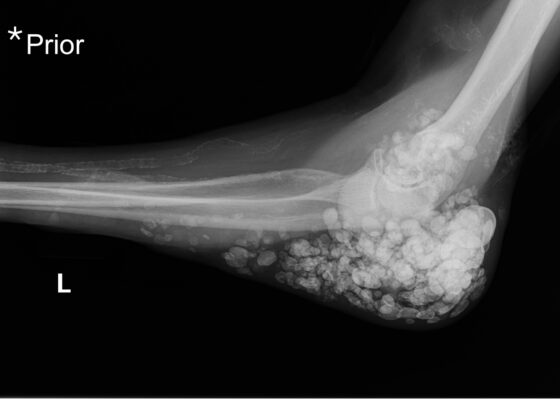Search By Topic
Found 645 Unique Results
Page 1 of 65
Page 1 of 65
Page 1 of 65
A Longitudinal, Practical Curriculum for Faculty Development as New Coaches in Graduate Medical Education
DOI: https://doi.org/10.21980/J88M08The aim of this curriculum is to provide a longitudinal, practical, and interactive coach training curriculum for faculty with no prior coaching experience.
Cognitive Errors and Debiasing
DOI: https://doi.org/10.21980/J84W96By the end of this lecture, learners should be able to, 1) Define dual process theory, 2) identify common cognitive biases, 3) recognize high-risk situations for cognitive errors, and 3) discuss debiasing strategies and integrate one strategy into your workflow.
Critical Care Transport: Blunt Polytrauma in Pregnancy
DOI: https://doi.org/10.21980/J81366At the completion of this simulation participants will be able to 1) perform primary and secondary trauma surveys, 2) assess the neurovascular status of a tibia/fibula fracture, 3) appreciate anatomic and physiologic differences in pregnancy, 4) appropriately order analgesia and imaging, 5) recognize and treat hemorrhagic shock, 6) perform an extended focused assessment with sonography in trauma exam (eFAST) in undifferentiated hemorrhage, 7) identify a displaced pelvic fracture and properly apply a pelvic binder, and 8) obtain and interpret fetal heart rate using ultrasound.
Beta-Blocker Toxicity
DOI: https://doi.org/10.21980/J8WD3XBy the end of the session, learners will be able to: 1) manage a patient with hypotension, and bradycardia while maintaining a broad differential, 2) evaluate the causes of hypotension by utilizing ultrasound, 3) review when to initiate vasopressors and first-line agents for beta-blocker toxicity, 4) discuss treatment algorithm for BB toxicity including high-dose insulin and, 5) discuss the risk factors for suicide
A Comprehensive and Modality Diverse Cervical Spine and Back Musculoskeletal Physical Exam Curriculum for Medical Students
DOI: https://doi.org/10.21980/J8RQ0NBy the end of this session, students will be able to: 1) demonstrate how to properly perform a cervical spine and back physical exam, 2) understand the reasoning behind cervical spine and back PE maneuvers, 3) identify the proper technique and equipment to use for the cervical spine and back PE, 4) understand normal and abnormal findings in the cervical spine and back PE, 5) accurately record and report exam findings for the cervical spine and back PE.
A Recipe for Disaster – Sodium Bicarbonate Overdose
DOI: https://doi.org/10.21980/J8MW85At the end of this oral board session, learners will be able to: 1) obtain a history which includes medications and other supplements used by the patient, 2) interpret a prolonged QTc, 3) diagnose metabolic alkalosis due to sodium bicarbonate toxicity, and 4) manage sodium bicarbonate toxicity with fluid and electrolyte resuscitation.
Posterior Reversible Encephalopathy Syndrome and Eclampsia
DOI: https://doi.org/10.21980/J8H64TAt the end of this oral boards session, examinees will be able to: 1) demonstrate familiarity with the structured interview oral board format and case play; 2) recognize the history and exam features concerning for PRES and eclampsia; 3) order appropriate diagnostic workup for postpartum and hypertensive emergencies including eclampsia and PRES; 4) understand treatment options for the management of eclampsia (intravenous [IV] magnesium sulfate, IV antihypertensive therapy, and emergent consultation with an obstetrician [OB/GYN]); 5) understand threshold for taking control of airway in patients with eclampsia; 6) understand indications for ordering brain imaging in patients with eclampsia and altered mental status; and 7) demonstrate effective communication with treatment team/family members as well as correct disposition of the patient to a higher level of care (intensive care unit [ICU]).
Metastatic Calcinosis Cutis in the Emergency Department: A Case Report
DOI: https://doi.org/10.21980/J87Q00X-ray imaging was obtained of the left elbow and showed soft tissue calcium deposits. Radiology stated, “massive periarticular calcinosis of renal failure obscures fine osseous detail. Several of the largest calcifications have decompressed since the prior exam and may contribute to the drainage observed clinically. Superimposed infection is not excluded.” X-rays with an asterisk are the comparison images from two months previous to the visit. Areas of decompression are highlighted in blue demonstrating that some of the larger calcified nodules are no longer present.
A Case Report of Facial Swelling and Crepitus Following a Dental Procedure
DOI: https://doi.org/10.21980/J83W8HGiven the physical exam findings of crepitus on the right neck up to the right lower eyelid, a maxillofacial CT scan without contrast was performed. It revealed diffuse subcutaneous air within the soft tissues of the face and neck and free air within the pre-septal soft tissue of the right eye, appearing as hyperlucent (dark) areas on CT within the soft tissue planes (blue outline). It showed no evidence of post-septal free air. A single-view chest X-ray was also performed and was unremarkable except for incompletely imaged soft tissue gas in the right lower neck (blue outline). On flexible fiberoptic laryngoscopy performed by ENT, the oropharynx appeared diffusely edematous and narrowed.
Case Report of Post-Operative Uvular Necrosis Following Intubation
DOI: https://doi.org/10.21980/J8065JThe distal portion of her uvula was necrotic with a clear demarcation approximately halfway up the uvula. She had no trauma to the anterior oropharyngeal structures, tonsils, or adenoids. There were no lesions to the hard or soft palate. She had no carotid bruits or thrills, and no tenderness over the anterior portion of the neck.



